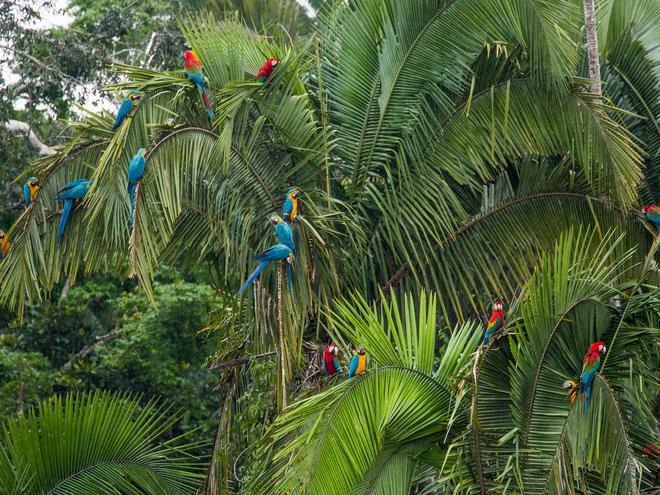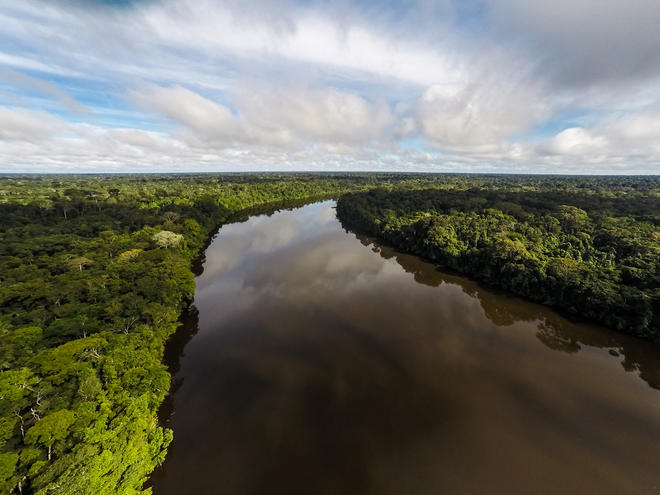

The sounds of Peru’s jungles are akin to those of a symphony. The high-pitched calls of toucans, the slow roar of howler monkeys, and the buzzing of insects together create unforgettable melodies.
But these natural harmonies do more than simply please the ear—they provide us with valuable information about the health of the forest.
In a recent study supported by WWF, researchers used recordings from dozens of cellphones and camera traps in three tropical forests in the Peruvian Amazon to figure out the number and variety of animals that live in each. They were interested in finding out whether logging in accordance with the Forest Stewardship Council (FSC) standards impacts wildlife.
The key finding from the research is that the make-up of wildlife in the FSC sites that were part of the study area was similar to that found in the forests studied that aren’t logged at all. This is an encouraging sign that logging that is done with conservation in mind helps to protect the diversity of plant and animal life in that area.
Prior to this study, there was little rigorous scientific evidence of FSC-certified forests safeguarding biodiversity. Gathering this type of evidence needs to become the status quo for forest managers.
The FSC standards spell out how to manage a forest responsibly so that logging, among other things, minimizes the negative impact on the environment, economy or society. For example, the use of chemicals is limited.
The results from this study are based on hundreds of sounds of birds, insects, amphibians, and monkeys captured by 72 cell phones—along with 72 camera traps—hidden in several forests of the Madre de Dios region of the Peruvian Amazon.
Although the study was limited to the Peruvian Amazon, the results from it have implications for tropical forests worldwide. Logging is permitted in one-third of the world’s tropical forests. If the logging is not done responsibly, it can lead to roads cutting through forests to create access, large “holes” in the forest canopy, as well as many other activities that degrade the forests and, ultimately, fragment the habitat many animals need to survive. Fifty percent of the species that live on land live in tropical forests.
One of the best ways to ensure animals and plants within forests can thrive is to create and properly manage protected areas. However, given that most forests are not in protected areas, other solutions are needed—such as managing forests in accordance with the FSC standards.
This new research complements an earlier study in five FSC-certified logged forests of the Madre de Dios region, conducted with images from 89 camera traps. The study concluded that densities of large- and medium-sized animals in the forests—including jaguars and pumas—was similar to or higher than those of protected areas.
In some ways, the newest study using sounds is more revealing because it involved small animals, which tend to be more sensitive to changes in habitats caused by low-intensity logging.
Given that the demand for forest products is projected to triple by 2050, monitoring the diversity of plants and animals with sounds and images is more important than ever—in the Peruvian Amazon and beyond. The advancement in technology to capture and analyze sounds and images has made it possible to implement such monitoring at large scale. Results from this type of monitoring can help drive home the need for managing the world’s forests responsibly.
Published July 23, 2019 at 05:00AM
No comments:
Post a Comment